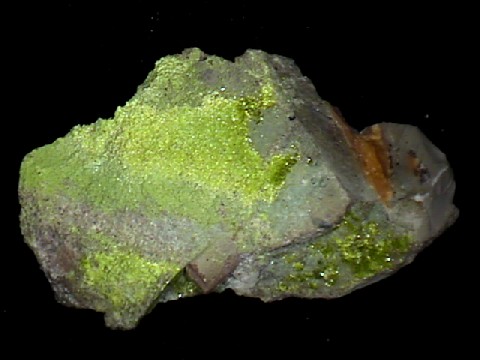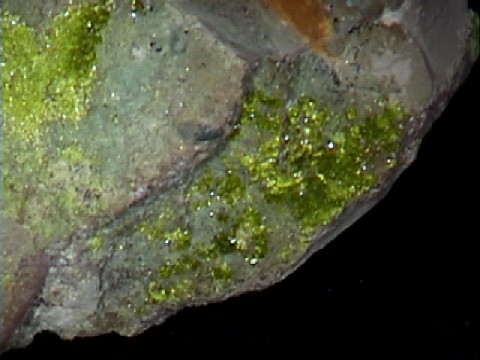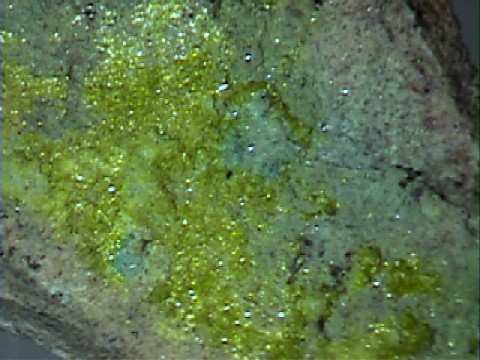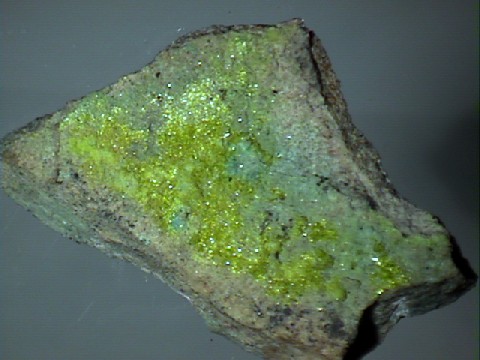 THE MINERAL VOLBORTHITE
THE MINERAL VOLBORTHITE
- Chemistry: Cu3V2O7(OH)2 - 2H2O, Hydrated Copper Vanadate Hydroxide.
- Class: Phosphates
- Subclass: Vanadates
- Uses: Only as mineral specimens.
Specimens
Volborthite is not all that closely related to the mineral calciovolborthite except that both are vanadate hydroxides. Obviously, volborthite lacks the calcium, but also has water molecules in its structure. Volborthite's formula could be written as Cu3(VO4)2 - 3H2O. But this formula does not show the true cationic unit as a pyrovanadate group; V2O7. The basic structure of volborthite is a sheet-like structure with copper oxide/hydroxide layers that are held together by the pyrovanadate groups and then these layers are stacked by layers of water.
PHYSICAL CHARACTERISTICS:
- Color is yellow to green-yellow or light brown.
- Luster is vitreous, pearly or dull.
- Transparency: Specimens are translucent to opaque.
- Crystal System is monoclinic; 2/m
- Crystal Habit is typically encrusting or rounded masses, also individual scales. Lamellar twinning is sometimes seem.
- Cleavage is imperfect.
- Hardness is 3.5
- Specific Gravity is approximately 3.4 - 3.5 (heavy for non-metallic minerals)
- Streak is pale green.
- Other Characteristics: Non-fluorescent.
- Notable Occurrences include the type localities of Sisersk and Nizhne Tagilsk, Ural Mts, Russia as well as numerous localities in Arizona; Carlin Gold Mine, Nevada USA; Mt. Vesuvius, Italy; Wheal Edward, Cornwall, England; Tugao, Inuyama, Aichi, Japan; Paull's Consolidated Mine, South Australia, Australia; Pribram, Czech Republic; Copiapo, Chile; Salzburg, Austria and Vancouver Island, Canada.
- Best Field Indicators are color, locality, non-fluorescence and density.






